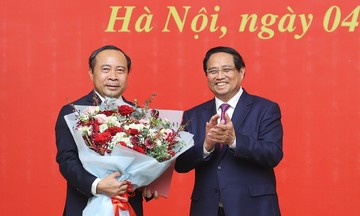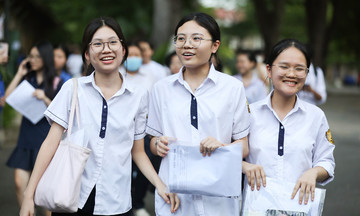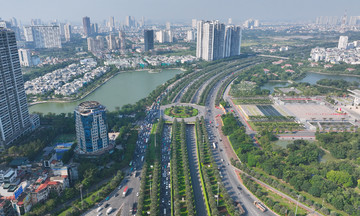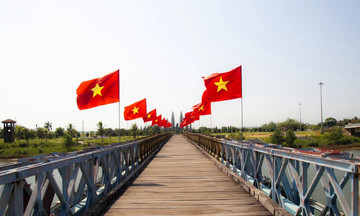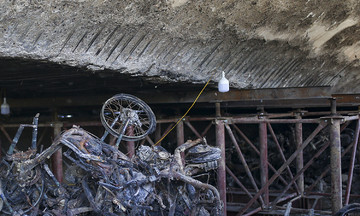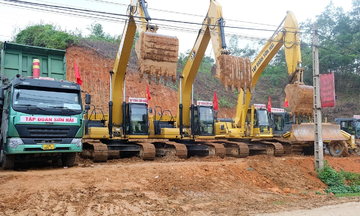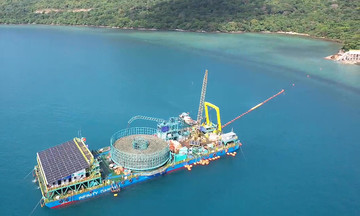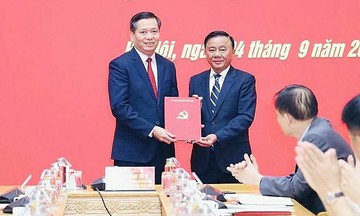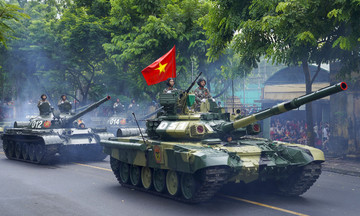 |
Amphibious armored vehicles, led by the BRDM-2 reconnaissance vehicle equipped with a 14.5 mm machine gun and a 3-person crew. Following are the BMP-1 and BMP-2 infantry fighting vehicles, along with the upgraded BTR-60PU command and communication vehicle, modified by Vietnam to serve as a mobile communication hub, ensuring seamless command in all modern combat scenarios. |
More than 16,000 troops from the Army, Air Force, Navy, and mechanized forces participated in the air, sea, and ground parade on 2/9, commemorating the 80th anniversary of Vietnam's National Day (A80).
The A80 parade marked the first time Vietnam's most modern main battle tanks participated. Leading the mechanized column was the armored formation, spearheaded by the upgraded T-54B tank, modernized by Vietnam.
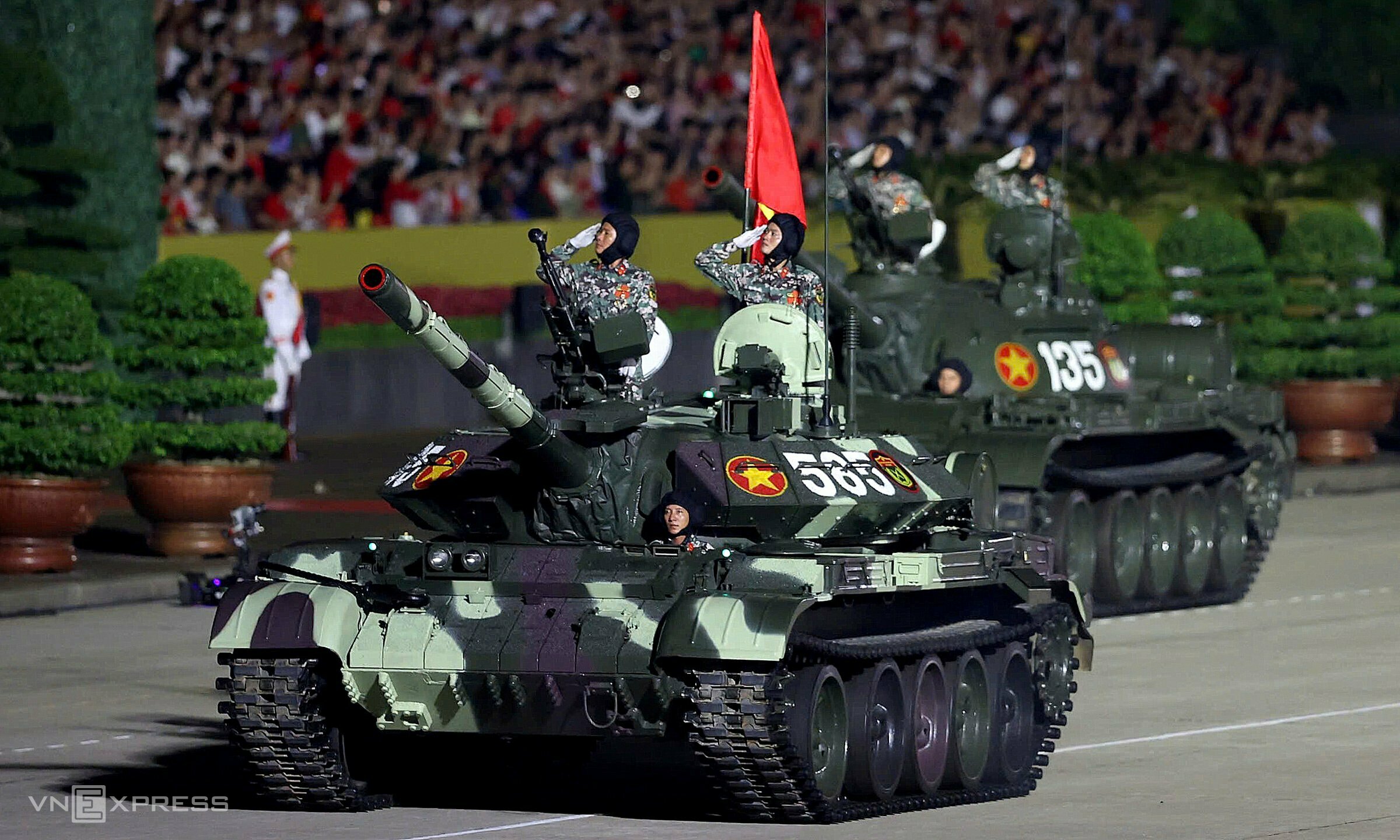 |
The upgraded T-54B tank features an upgraded digital fire control system, a modern target detection and reconnaissance system, and a new communication suite for coordinated combat with other vehicles. The tank is fitted with numerous explosive reactive armor (ERA) blocks on the turret and front to enhance survivability against enemy anti-tank weapons.
The upgraded T-54B still uses the 100 mm D-10T gun like the original T-54B but carries 38 rounds, 4 more than the older model. Vietnamese engineers also added thermal insulation to the main gun to maintain barrel shape and ensure accuracy in various weather conditions.
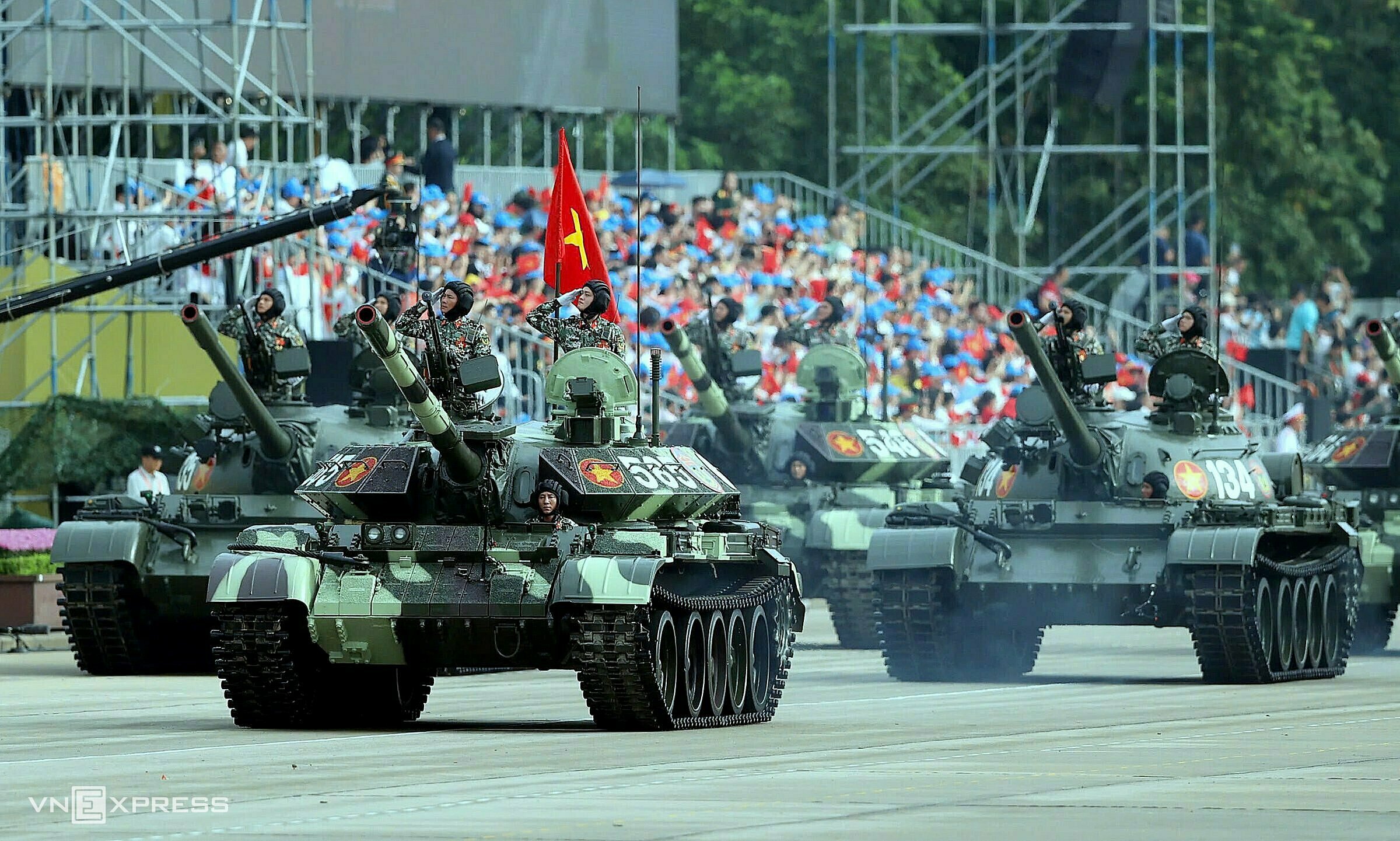 |
Following the upgraded T-54B tanks were the T-55s.
The T-54/55 series was developed by the Soviet Union to replace the T-34 from World War II. The tank has a top speed of over 50 km/h, an operating range of over 320 km, and 610 km with external fuel tanks. It's equipped with a 100 mm D-10T main gun, a coaxial 7.62 mm machine gun, and a 12.7 mm DShK anti-aircraft machine gun.
These T-54/55 tanks contributed to the resounding victories in the 1975 campaigns of Route 9 Southern Laos, Quang Tri, Central Highlands, and Ho Chi Minh.
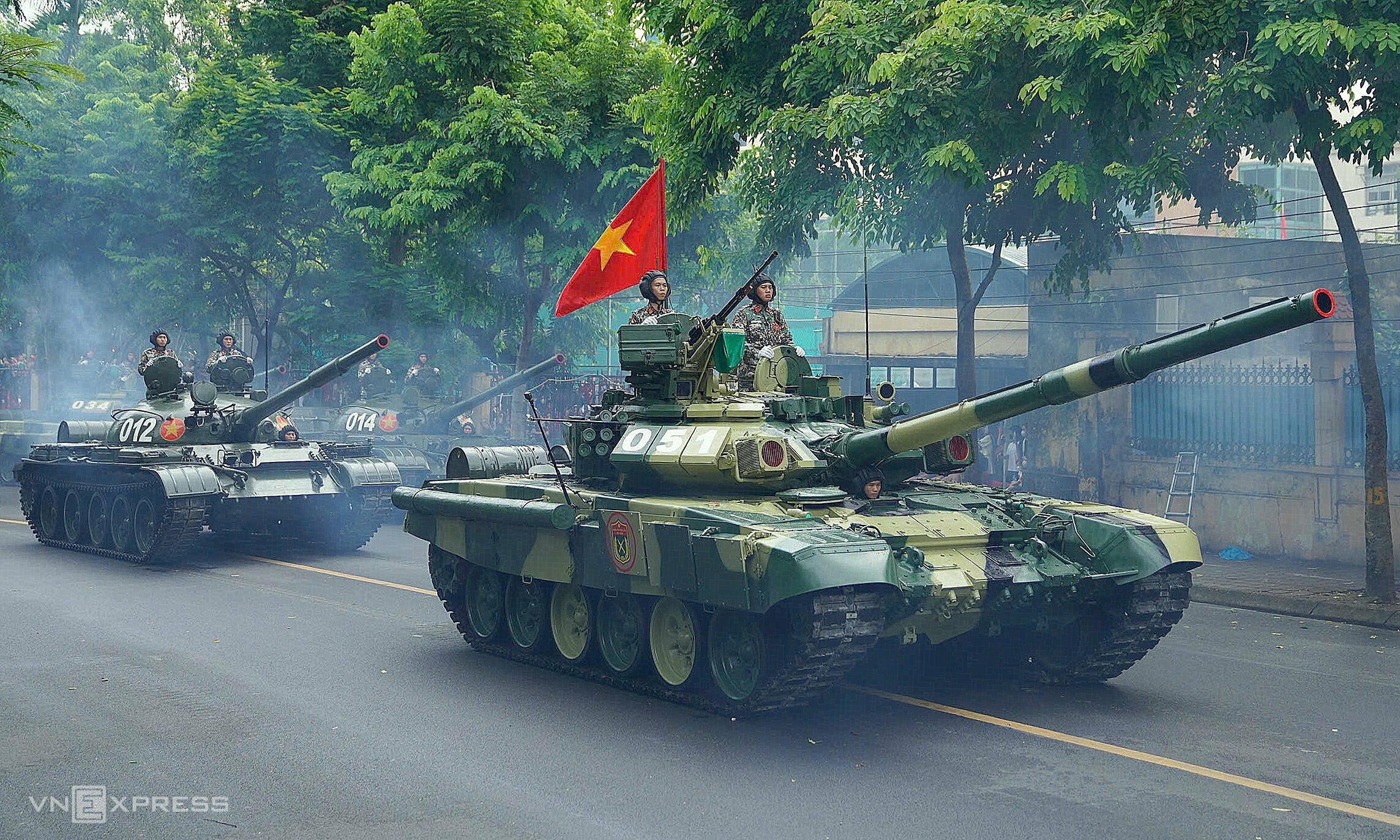 |
The T-90SK tank, the command variant of the T-90S, led the group of T-90S and T-62 tanks.
The T-90 was developed by the Soviet Union to replace the T-64, T-72, and T-80 tanks. The first T-90 variant was a heavily modernized version of the T-72B, initially called the T-72BU, later renamed to its current designation.
The T-90S is the export version, also serving in the Russian army as the T-90A. The command variant of this version is the T-90SK, equipped with additional communication and navigation systems. The T-90S has a three-person crew: commander, gunner, and driver.
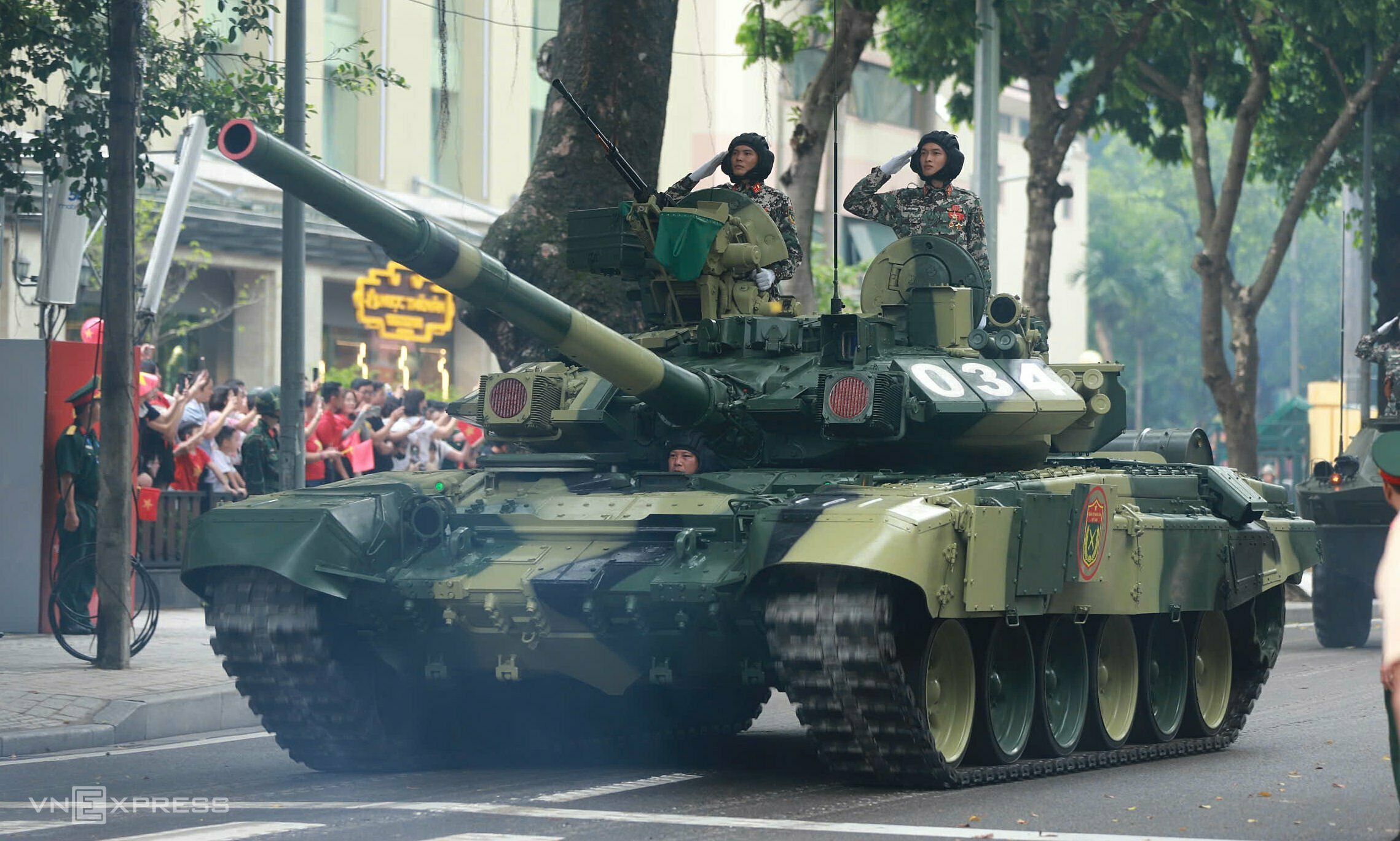 |
A T-90S tank travels on Nguyen Tri Phuong Street.
The tank is equipped with a multi-layered defense system. The outermost layer is the Shtora-1 passive defense suite, distinguished by the red "eyes" on either side of the main gun. It jams and suppresses laser and infrared guidance systems on anti-tank guided missiles (ATGMs), causing them to deviate from their targets.
The next layer is Kontakt-5 explosive reactive armor, particularly effective against high-explosive anti-tank (HEAT) warheads and capable of neutralizing American M829A2 armor-piercing fin-stabilized discarding sabot (APFSDS) rounds.
The final defensive layer of the T-90S is composite armor with a high-strength steel outer shell and multiple layers of composite materials interspersed with thick steel plates. This design increases defensive capabilities and significantly reduces weight compared to rolled homogeneous armor (RHA) with the same level of protection.
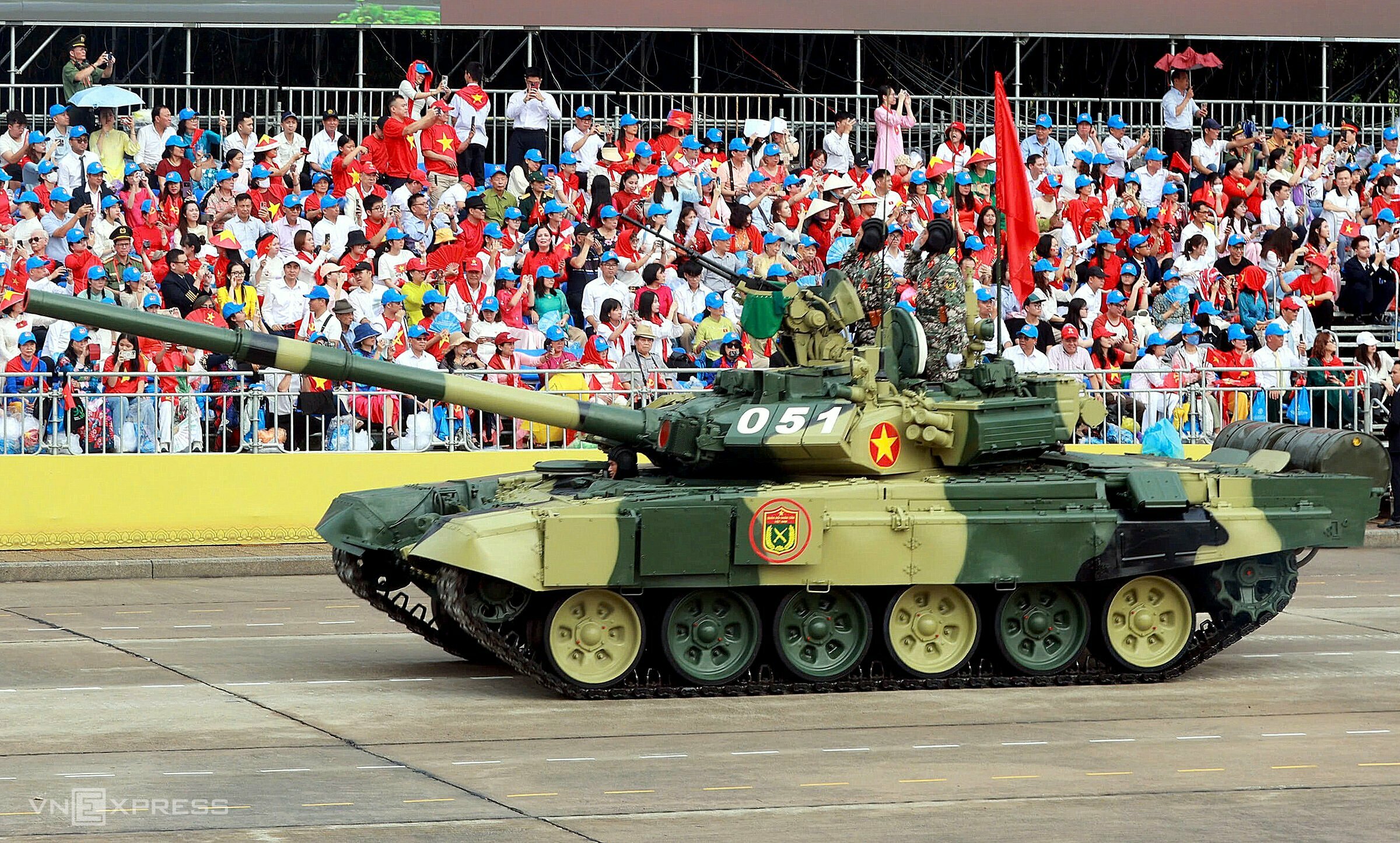 |
In terms of firepower, the T-90S is equipped with a 125 mm 2A46M-2 smoothbore gun with a maximum ammunition capacity of 42 rounds, utilizing an autoloader. This system reduces the crew to three: driver, commander, and gunner, making the T-90S compact, difficult to detect, and hit on the battlefield.
The T-90S is equipped with a modern fire control system, using various sensors, ballistic computers, and a laser rangefinder to ensure firing capability in various situations.
The main gun can fire APFSDS rounds, HEAT rounds, high-explosive fragmentation rounds, and the 9M119 Refleks gun-launched anti-tank missile. The Refleks missile is equipped with a tandem warhead capable of destroying explosive reactive armor and penetrating 950 mm of RHA. This missile can engage various targets, including low-flying helicopters, at a maximum range of 6 km and a target speed of no more than 70 km/h.
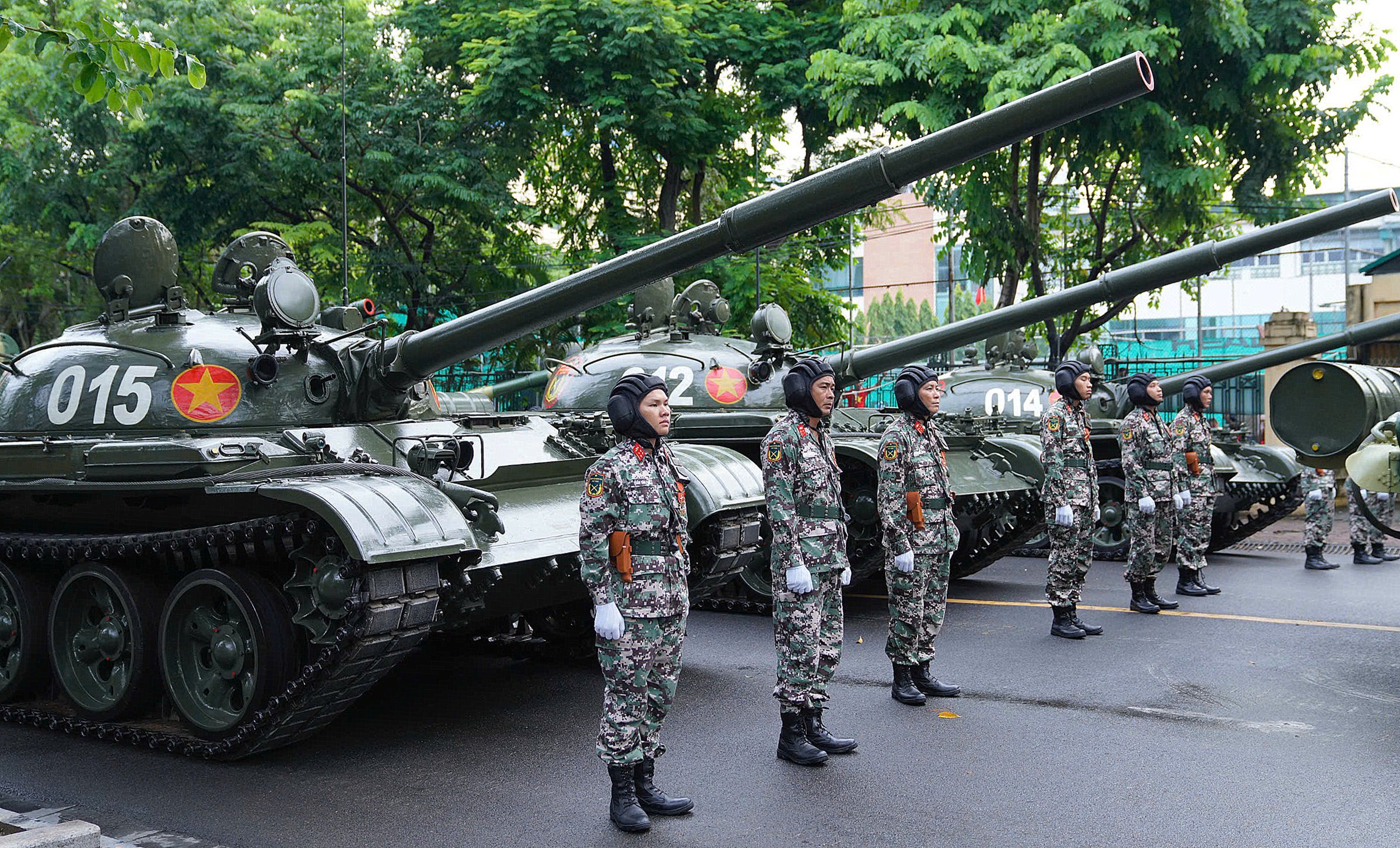 |
Tank crew members stand in front of a T-62 tank on Hung Vuong Street.
The T-62 is a main battle tank developed by the Soviet Union based on the T-54/T-55 series, sharing some design features with its predecessors, such as a low hull and thick turret. The T-62 entered service in 1961, with over 22,700 units produced.
The T-62 tank has a 4-person crew: commander, gunner, loader, and driver. The T-62 is armed with a 115 mm 2A20 main gun. It was the world's first tank to use a smoothbore gun, allowing it to fire APFSDS rounds with better armor penetration than the rifled guns of contemporary Western tanks.
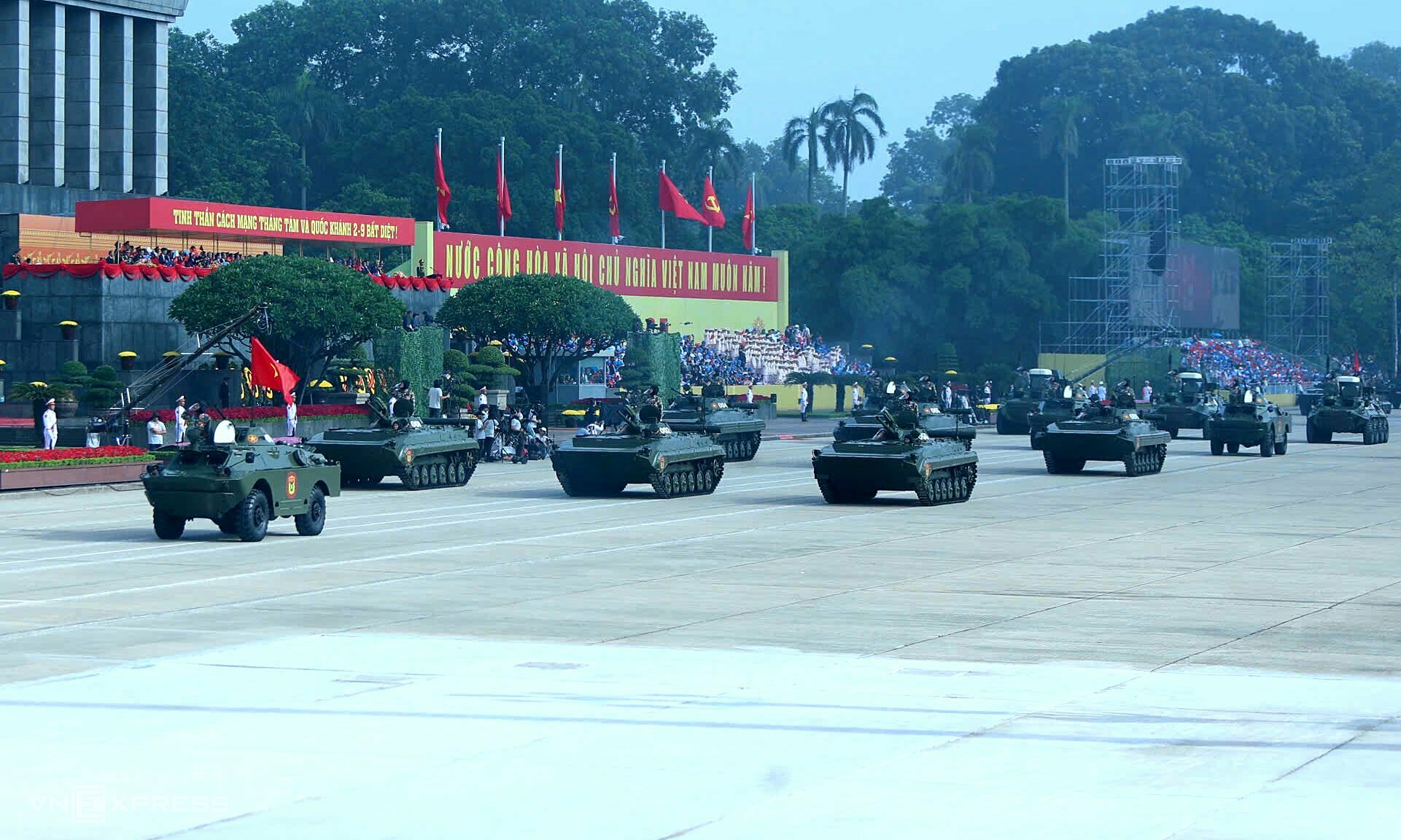 |
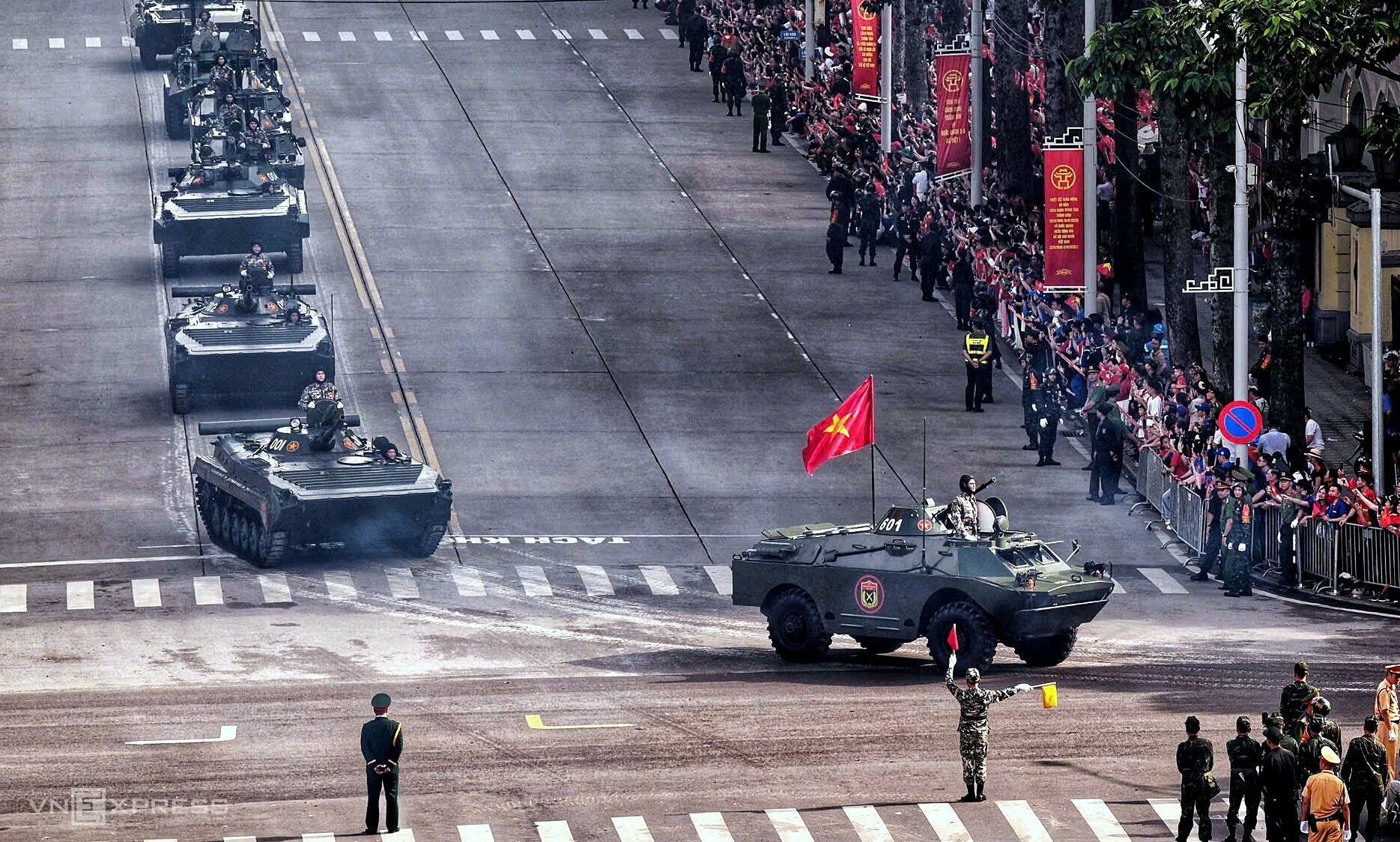 |
The BMP-1 infantry fighting vehicle (leading) was developed by the Soviet Union and first entered service in 1966, with over 20,000 units of various versions produced. The vehicle has a crew of three and can carry 8 soldiers.
The BMP-1 is equipped with a 73 mm 2A28 Grom main gun, a 9M14 Malyutka anti-tank missile launcher with 4 missiles, and a coaxial 7.62 mm PKT machine gun. The early versions of the Malyutka had a range of 3 km and could penetrate 460-520 mm of RHA.
The vehicle can reach a top speed of 65 km/h on roads and 45 km/h on uneven terrain, a swimming speed of 7-8 km/h, and a maximum operating range of 500-600 km depending on the terrain.
The BMP-2 amphibious infantry fighting vehicle, also developed by the Soviet Union, entered service in 1980, with over 20,000 units produced. It has a crew of three and can carry 7 soldiers. The BMP-2 has a top speed of 65 km/h on roads, 45 km/h on uneven terrain, a swimming speed of 7 km/h, and an operating range of 600 km.
The vehicle is equipped with a 30 mm 2A42 autocannon, a 9M113 Konkurs anti-tank missile, and a 7.62 mm PKT machine gun. The original Konkurs missile has a range of 4 km and can penetrate 600 mm of RHA, while the upgraded Konkurs-M can penetrate 750-800 mm of RHA.
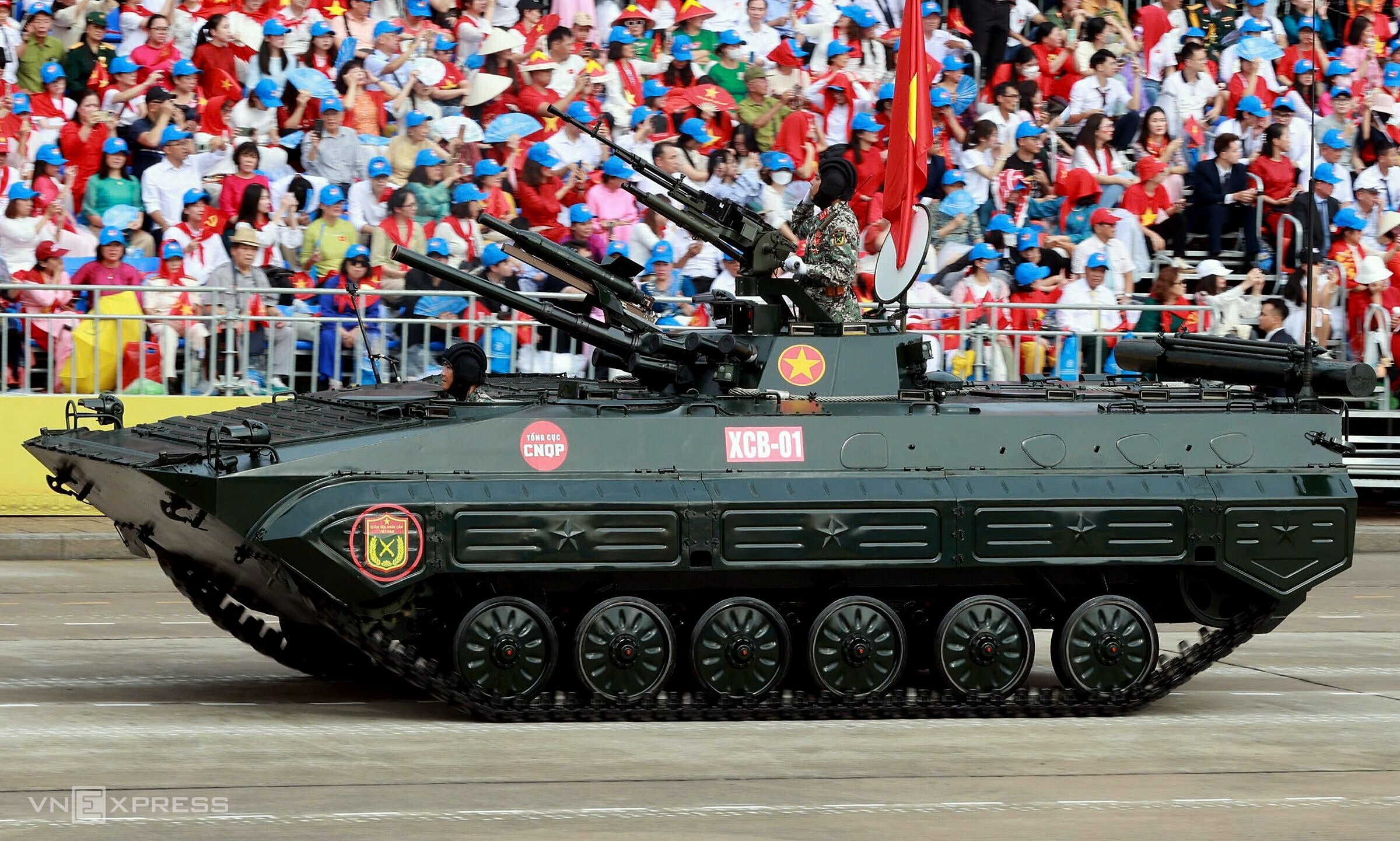 |
The XCB-01 infantry fighting vehicle, researched, developed, and produced by the General Department of Defense Industry of Vietnam, weighs 15 tons, is nearly 7 m long, over 3.2 m wide, and over 2 m high.
The XCB-01 has a three-person crew: commander, gunner, and driver. It can carry 8 fully equipped soldiers. The vehicle compartment is air-conditioned, and the hull has firing ports for soldiers to fire from inside.
Additionally, there's the XTC-02 armored personnel carrier, researched and manufactured by the General Department of Defense Industry, equipped with 12.7 mm and 7.62 mm machine guns. It has a three-person crew and can carry 9 soldiers.
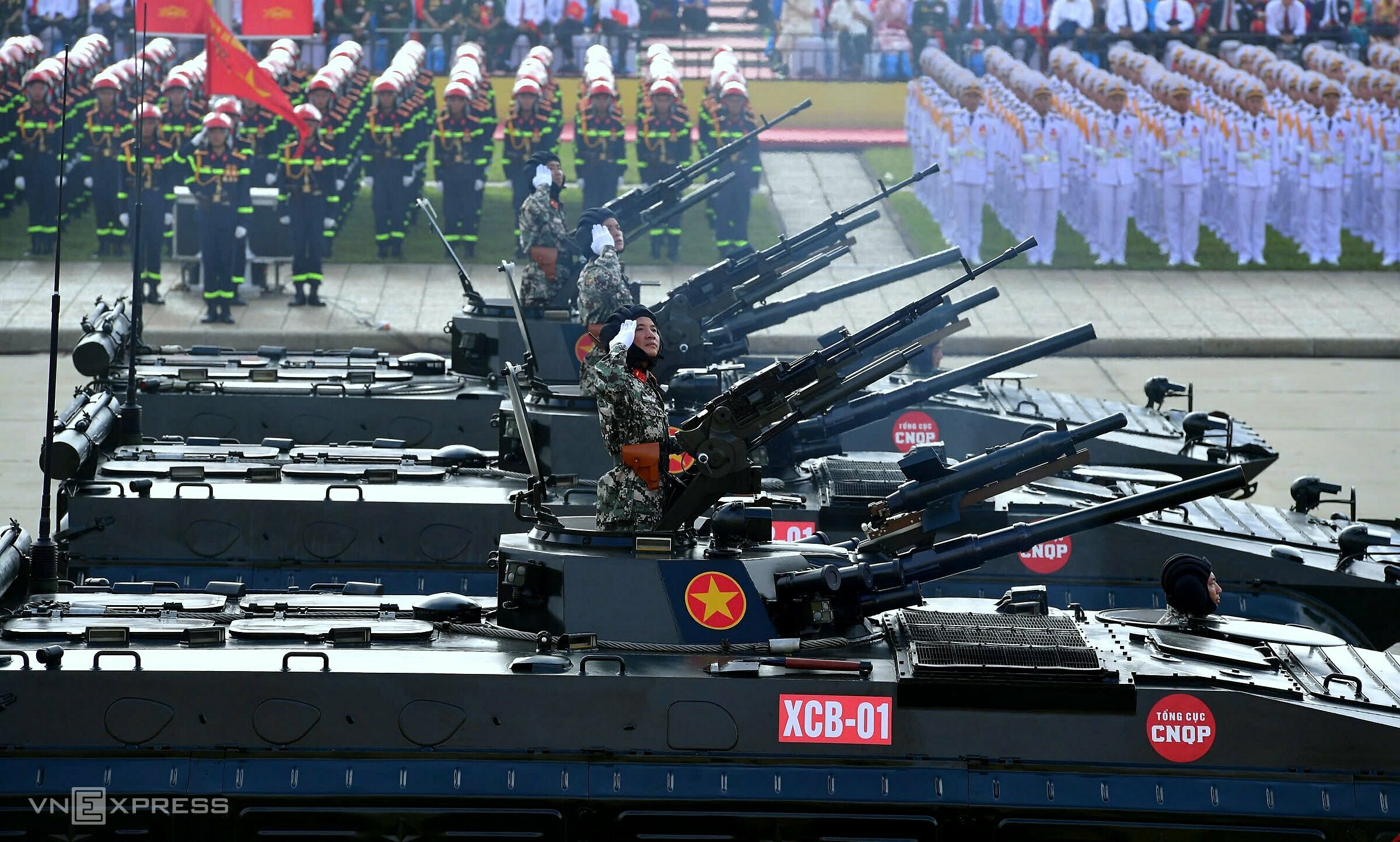 |
The XCB-01 armored vehicle is equipped with a 73 mm smoothbore main gun with 40 rounds and a semi-automatic loading system, a coaxial 7.62 mm PTK machine gun, a 12.7 mm machine gun on the turret roof, and a launcher for the upgraded 9M14 Malyutka anti-tank missile manufactured in Vietnam.
Photo: Ngoc Thanh - Duc Dong - Nguyen Dong



